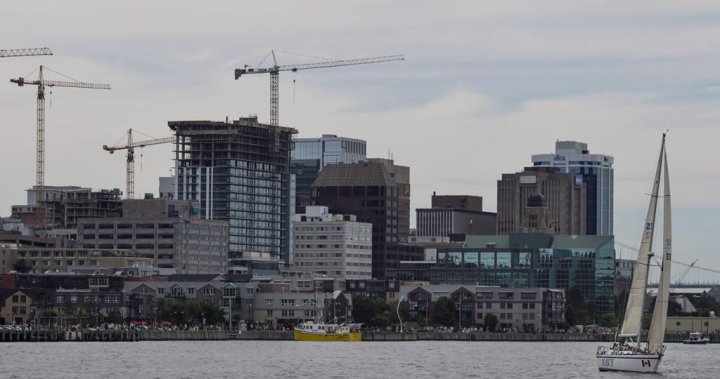Canada
Nova Scotia capital plan: New public housing units to nearly double across province

Nova Scotia Unveils Ambitious Capital Plan for 2025-26, with a Major Focus on Public Housing
Nova Scotia has announced an ambitious capital plan for the 2025-26 fiscal year, with a significant emphasis on addressing the province’s housing crisis. The $2.4-billion plan, unveiled by Growth and Development Minister Colton LeBlanc, includes a substantial investment in public housing, nearly doubling the number of new units planned compared to previous commitments. This move comes as the province seeks to tackle a growing waitlist for public housing, which currently exceeds 7,000 people. The plan also allocates significant funds to healthcare and other critical infrastructure, signaling a comprehensive approach to supporting the province’s residents.
A Historic Investment in Public Housing
One of the most notable aspects of Nova Scotia’s capital plan is the $136.4-million allocation for 242 new public housing units. This investment marks a significant step forward in addressing the province’s housing challenges, particularly for low-income families and individuals in need. Over the past 18 months, the government had already announced 222 housing units and 51 modular units, representing the first major investments in public housing in 30 years. The addition of these new units brings the total number of new housing units to over 500, a move that is expected to alleviate some of the pressure on the overwhelmed housing waitlist.
While the government has not yet provided a completion timeline for the newly announced housing units, officials have confirmed that the final set of units announced in September 2023 are on track for completion by 2028. This long-term commitment reflects the province’s recognition of the urgency of the housing crisis and its determination to provide sustainable solutions.
Addressing the Housing Waitlist: A Top Priority
The driving force behind Nova Scotia’s increased investment in public housing is the alarming growth of its waitlist, which now surpasses 7,000 people. This number underscores the severity of the housing shortage and the critical need for affordable housing options. Finance Minister John Lohr emphasized that the government is prioritizing the construction of new housing units to help reduce this backlog and ensure that vulnerable populations have access to safe and affordable housing.
The focus on public housing is also part of a broader strategy to address socioeconomic disparities and promote community well-being. By investing in affordable housing, the government aims to create stronger, more inclusive communities where residents can thrive.
Health Care Investments: A Key Component of the Capital Plan
In addition to its focus on housing, Nova Scotia’s capital plan includes a significant investment in healthcare infrastructure. The plan allocates $1.4 billion to the healthcare sector, with $750.9 million specifically earmarked for hospital projects in Halifax and the Cape Breton Regional Municipality. These investments are expected to enhance healthcare access and improve the quality of services for residents across the province.
The healthcare funding is part of a larger effort to modernize the province’s medical facilities and ensure that patients receive the care they need in a timely and efficient manner. By prioritizing healthcare infrastructure, the government is demonstrating its commitment to the health and well-being of its residents, particularly in light of the challenges posed by an aging population and increasing healthcare demands.
Beyond Housing and Healthcare: Investments in Other Sectors
While public housing and healthcare are the cornerstone of Nova Scotia’s capital plan, the $2.4-billion budget also includes investments in other critical areas, such as education, transportation, and public safety. These allocations reflect the government’s holistic approach to fostering economic growth and improving the quality of life for all residents.
For example, the plan includes funding for new schools and upgrades to existing educational facilities, ensuring that students have access to modern learning environments. Additionally, investments in transportation infrastructure will help to improve road safety and reduce congestion, benefiting both commuters and local businesses. These diverse investments underscore the government’s vision of building a sustainable and resilient future for Nova Scotia.
Public Reaction and the Road Ahead
The announcement of Nova Scotia’s capital plan has been met with a mix of optimism and caution. While many residents and advocacy groups have welcomed the increased focus on affordable housing and healthcare, some have expressed concerns about the long timelines for project completion and the potential for rising construction costs.
Despite these challenges, the government’s commitment to addressing the province’s housing crisis and improving public services is a step in the right direction. As the plan moves forward, it will be important for officials to maintain transparency and engage with communities to ensure that these investments meet the needs of all Nova Scotians. By prioritizing the well-being of its residents and investing in key infrastructure, the province is laying the foundation for a brighter future.
In conclusion, Nova Scotia’s 2025-26 capital plan represents a bold and necessary step toward addressing some of the province’s most pressing challenges. With a focus on public housing, healthcare, and other essential services, the government is demonstrating its commitment to building a more equitable and sustainable society. While the road ahead will undoubtedly present its challenges, the investments outlined in this plan offer hope for a future where all Nova Scotians can thrive.